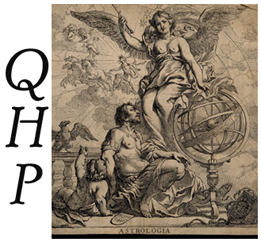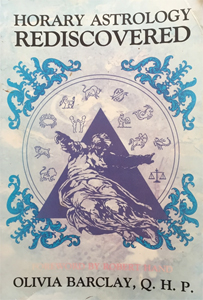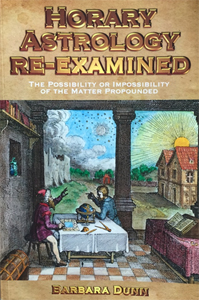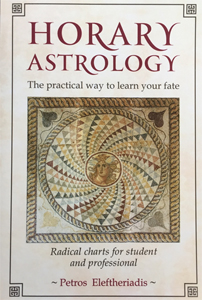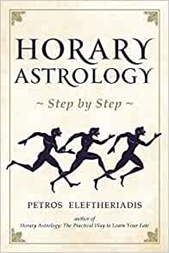About the QHP
- Qualifying Horary PractitionerCertificate and DiplomaEstablished 1984
The Qualifying Horary Practitioner (QHP) is a correspondence course divided into a Certificate and a Diploma. For the Diploma course, students can choose one of two Modules: Horary or Horary & Nativities. Regiomontanus is the preferred house system and is used throughout the Lessons. Unlike other astrologers, schools or courses, the QHP Lessons do not include material related to the outer planets or asteroids. The 5 visible planets (Saturn, Jupiter, Mars, Venus, Mercury), and the 2 luminaries (Sun and Moon) are those invoked by the QHP. The growing number of new celestial bodies presented in journals and periodicals, not to mention old faithfuls, Uranus, Neptune and Pluto, are of no relevance to the QHP. Our ancestors in classical, mediaeval and early modern times could only see the luminaries (the Sun and Moon) and the five planets. With only these as their main points of reference, they produced beautiful and masterly judgements.
Referring to Placidus de Titis and his Fourth Thesis, Michael Baigent tells us about an ancient idea originally put forward by the Babylonians and repeated later by Ptolemy: ‘if the stars or other celestial phenomena cannot be seen then they cannot have any effect’.[1] For Placidus, the reasoning is this: ‘If the stars are not visible then their light cannot be falling upon us. If their light is not falling upon us there is no connection and so there is no effect’. Ancient astrologers believed that celestial bodies could only have an influence over the places from where they could be seen. As a consequence, only the 7 bodies which could be seen from earth were invoked.
Modern astrologers divide astrology up into different areas of specialisation, but astrology is one. The method of planetary evaluation is the same whether it is an Interrogation (horary), Nativity, Election or any other type of chart. This is explained fully and clearly in Horary Astrology Re-Examined: The Possibility or Impossibility of the Matter Propounded.
By the end of the Diploma course, students are expected to make an accurate, verifiable prediction from an Interrogation (horary chart). This, together with continual assessment, replaces a final examination. After demonstrating that the Lessons have reached a professional standard, students are awarded the Diploma. The QHP Diploma entitles the holder to use the initials QHP (Qualifying Horary Practitioner). If you are interested in studying for the Qualifying Horary Practitioner please take a look at the syllabus. If you fulfil the entry requirements, you may then contact the team for enrolment.
The QHP also offers a module in Horary & Nativities. Certainly the most important of all charts, the pre-eminence of the Nativity is confirmed by William Lilly (1602-1681) and his contemporaries. No promising Horary can contradict the testimony of the Nativity. Equally, the Election and Decumbiture should also be cross-referenced with a Nativity. Henry Coley (1633-1704) confirms ‘tis but a vain and foolish thing for any person to constitute an Election’, without knowledge of the Nativity. Alongside the more general testimony of the Nativity, the more precise testimony of the Horary reveals information relating to a specific enquiry at a specific point in time. In deploying the testimony of the Nativity alongside the Horary (and other charts), the practitioner is able to provide a more complete analysis and interpretation. It is for this purpose that the QHP offers this unique new course, Horary & Nativities, which combines both horary and genethliacal (natal) techniques. The Horary & Nativities course was devised by QHP Head Tutor, Petros Eleftheriadis.
Both the existing QHP Diploma Module (Horary) and the new QHP Diploma Module (Horary & Nativities) are designed primarily for QHP Certificate holders, but Certificate holders from other courses and other interested students are also welcome, provided that the required level of competence in astrological theory can be demonstrated. The new QHP Module is particularly concerned with predictive techniques applied to Nativities, such as primary directions, secondary progressions, solar and lunar returns, profections and so on. Yet, this new Module also builds upon the theory and practice of horary techniques taught at QHP Certificate level in its application of these techniques to a wider range of charts. Successful completion of this new QHP Module entitles the holder to the initials QHP (Qualifying Horary Practitioner).
[1] M. Baigent (ed.) and J. Cooper (trans.), Placidus De Titis: Primum Mobile 1657 (Bromley, 1983). Baigent’s Introduction.
Click here to contact us for further information
QHPAstrology.co.uk - Qualifying Horary Practitioner (QHP) Established 1984
Copyright QHPAstrology.co.uk 2023 ©

